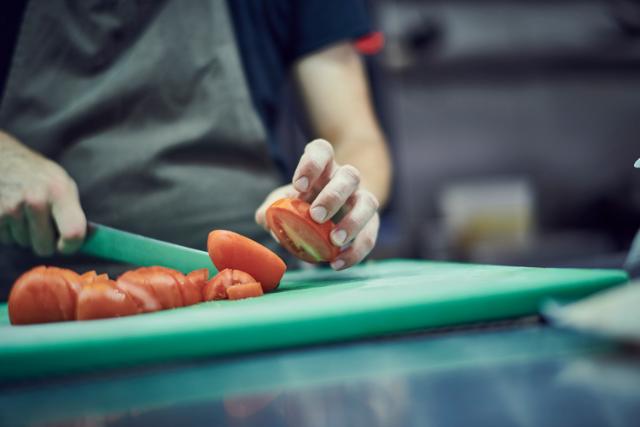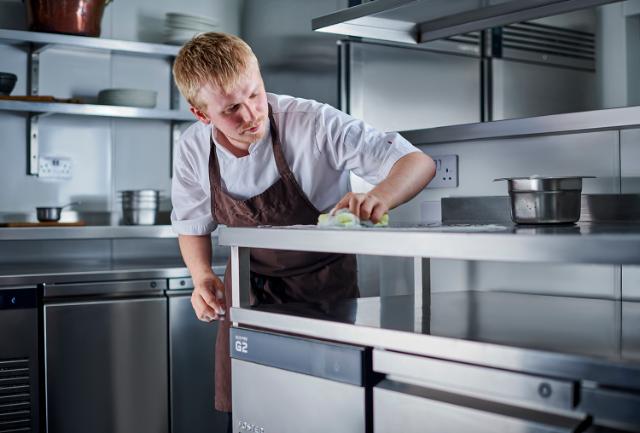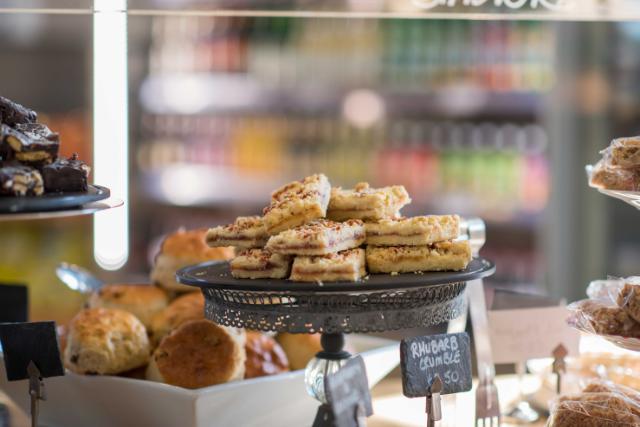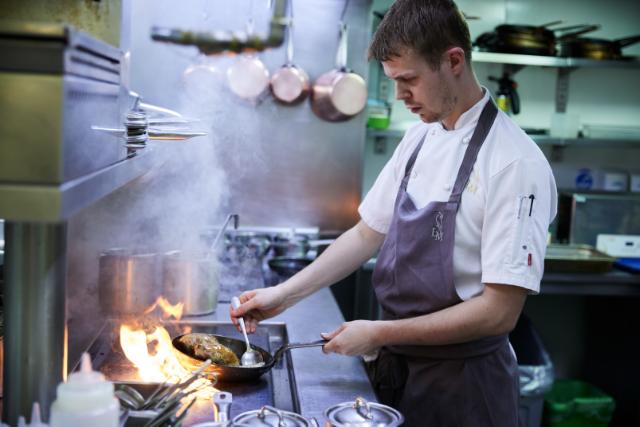
Training Staff on Food Hygiene Regulations
What every caterer should know about staff supervision, instruction and food safety training regulations.
To meet food health and safety regulations, adequate staff training is essential. Read this article to learn what the law says about food hygiene, industry best practices and what each level of food safety training involves.
What does the law say about Food Safety Regulations?
With food safety concerns over the alarming increase in food poisoning cases attributed to food eaten outside of the home, it is essential that every caterer takes steps to ensure that all food-handling staff are supervised and/or trained in food hygiene matters.
Failure to comply with regulations can result in prosecution and lead to a substantial fine or, in extreme cases, imprisonment. Bad publicity can also ruin a food business, often affecting people’s livelihoods, but, ultimately, food poisoning can kill. Therefore, effective staff training and supervision is of paramount importance, especially in an industry with such a high staff turnover of semi-skilled and unskilled kitchen staff.
Legislation regarding training encompasses food safety and hygiene, but you must not forget to make sure your staff are also aware of other issues. For example the use and storage guidelines for your cooking and refrigeration equipment - as storing and displaying food at too high a temperature is one of the most common causes of food poisoning.


How to comply with legislation?
The Food Hygiene Regulations 2006 require that the proprietor of a food business shall ensure that food handlers engaged in the food business are supervised and instructed and/or trained in food hygiene matters “commensurate with their work activities.” Therefore, any staff member handling food - whether open or packaged and including drinks and ice - should receive supervision / instruction / training to a level suitable for their role. But how do you classify a position and make sure you meet the regulations?
How are staff categorised?
There are essentially three categories of food handler that must be instructed and/or trained. These categories are based on the job of the individual and also on the type of food they handle. Those involved in the handling and preparation of ‘high-risk’ foods will need more training than those only involved with ‘low-risk’ items. The following table provides a useful guide:

| Employee | Training level required | ||||
| Staff level | Likely job title | Stage 1 | Stage 2 | Stage 3 | |
| - | - | The Essentials of Food Hygiene | Hygiene Awareness Instruction | Formal Training Level 1 | Formal Training Level 2 and/or 3 |
| Category A Handle low risk or wrapped food only | Storeman, waiter/ waitress, bar staff, counter staff, servery assistant, cellarman, food delivery staff | Training required before starting work for the first time | Training required within 4 weeks of starting (8 weeks for part-time staff) | Not necessary | Not necessary |
| Category B Food handlers who prepare open, ‘high risk’ foods | Commis chef, cook, catering supervisor, kitchen assistant & bar staff who prepare food | Training required before starting work for the first time | Training required within 4 weeks of starting | Training required within 3 months of starting | Not necessary |
| Category C Food handlers who also have a supervisory role | Unit manager/ supervisor, chef manager, bar/pub manager, chef, operations general manager, owner/ operator of home/mobile catering business | Training required before starting work for the first time | Training required within 4 weeks of starting | Training required within 3 months of starting | Good practise (according to responsibilities) |
What is Stage 1 - The Essentials of Food Hygiene?
To comply with regulations, anyone handling food must receive written or verbal instruction in the Essentials of Food Hygiene before they start work at an establishment for the first time.
Key points for staff to be made aware of:
- Keep yourself clean and wear clean clothing
- Always wash your hands thoroughly: before handling food, after using the toilet, handling raw foods or waste, before starting work, after every break and after blowing your nose
- Before you start work, tell your supervisor of any skin, nose, throat, stomach or bowel trouble or infected wounds. You are breaking the law if you do not
- Ensure cuts and sores are covered with a waterproof, high-visibility dressing
- Avoid unnecessary handling of food
- Do not smoke, eat or drink in a food room, and never cough or sneeze over food
- If you see something wrong, tell your supervisor
- Do not prepare food too far in advance of service
- Keep perishable food either refrigerated or piping hot
- Keep the preparation of raw and cooked food strictly separate
- When reheating food ensure it reaches piping hot
- Clean as you go - keeping all equipment and surfaces clean
- Follow any food safety instructions provided, either on food packaging or from your supervisor.


What is Stage 2 - Hygiene Awareness Instruction?
All staff must also undertake a Stage 2 hygiene training course as soon as possible after starting in a food-handling role. For full-time staff this should be within four weeks and for part-time staff within eight weeks.
This level of training should help staff to develop knowledge of the basic principles of food hygiene, but needs to be made relevant to the individual’s role. Focus should be placed on instructing staff how to carry out their job hygienically to ensure food safety, including any control or monitoring processes your business has outlined as part of HACCP. To guarantee you meet your legal training requirements, you should ensure that all staff are trained on the following issues and that a training log or folder is completed and signed for each staff member.
Key points must include:
- Your business policy and the priority placed on food hygiene
- ‘Germs’ and how these have the potential to cause illness
- Personal health and hygiene, including the need for high standards, reporting illnesses and rules on smoking
- Cross contamination: cause and prevention
- How to safely store food: protection and temperature control
- Waste disposal, cleaning and disinfection, detailing materials, methods and storage
- The risks of ‘foreign body’ contamination and how to avoid
- Awareness of pests.
What is Stage 3 - Formal Training?
Category B and C staff should also have completed formal food hygiene training to Level 1 and received their food hygiene certificates. This training develops a level of understanding of the basic principles of hygiene, and is commonly known as the Foundation Certificate in Food Hygiene (formerly the Basic Food Hygiene Certificate).
Courses are accredited and run by several organisations, including The Chartered Institute of Environmental Health (CIEH) and The Royal Institute of Public Health and Hygiene (RIPHH). These are held at various centres throughout the UK and are available in several languages. To find out about courses in your area, visit www.cieh.org/training or email examinations@riph.org.uk
Larger establishments and organisations may be able to establish their own in-house training to educate staff, providing the trainers themselves are adequately trained and that training is carried out to an appropriate standard to satisfy the legal requirements. Contact the CIEH or RIPHH for more information.
The Foundation Certificate in Food Hygiene course covers the following areas:
- Food poisoning microorganisms types and sources
- Simple microbiology, toxins, spores, growth and death
- Premises and equipment
- Common food hazards, including physical, chemical and microbiological
- Personal hygiene: basic rules and responsibilities
- Preventing food contamination
- Food poisoning: symptoms and causes
- Cleaning and disinfection
- Legal obligations
- Pest control
- Effective temperature control of food, for example: storage, thawing, reheating and cooking.


What are the industry best practices?
So far, we have summarised the minimum steps you must take to ensure you meet the legal requirements of current legislation. However, it is always advisable to follow industry best practice advice, especially since the ‘due diligence’ defence requires you to prove that you have taken all reasonable steps to meet the regulations.
HACCP, staff training plans and temperature control training are all standard practice in many reputable catering outlets. It would be wise to follow these procedures to ensure your statutory obligations are met. Although they are not currently specifically mentioned in legislation on training, they will ensure you meet the ‘due diligence’ test.
The 2006 regulations require that all catering space outlets - irrespective of size - monitor HACCP to conform with their policy of ‘Safer Food, Better Business’ (SFBB). Requirements differ according to outlet size with full HACCP processes required for larger businesses. SFBB covers policy for all smaller catering businesses. For more information, visit the Food Standards Agency website.
HACCP/SFBB
You should already have all of your HACCP (Hazard Analysis Critical Control Point) processes and procedures in place. It is particularly important to ensure that your staff have a good knowledge of these to manage food hygiene. For detailed guidance on all aspects of HACCP, see the HACCP Foster White Paper in this series.


Why use food hygiene training plans?
The recording of training activity is advisable, but not essential. However, if you can prove that every member of your staff has been trained to a level appropriate to their role, this could be vital in attempting to establish a ‘due diligence’ defence if needed.
A training plan will also ensure that any weaknesses are identified and will make sure that any change in role will lead to the necessary instruction and/or training. Ideally, a simple training form should be signed by both parties on completion of each training session and a record should be kept for every employee.
What is temperature control training?
Poor understanding of temperature control is one of the key causes of foodborne illness and all staff - especially those in Category B and C - should fully understand temperature requirements. Although this is not currently required legally, it is anticipated that legislation will become more stringent in this area over the next few years.
Staff who handle food should be appropriately trained in the operation of any restaurant blast chillers. Blast chillers help keep food out of the ‘danger zone’ of high bacteria growth rate between +8°C and +63°C. Blast chillers work by rapidly decreasing the temperature of food in a controlled manner, much faster than is possible in a standard refrigerator. While the use of blast chillers is not yet required by food safety law, they have become an industry standard.
To meet standard industry best practice, you should take steps to make sure that staff are aware of which foods are subject to existing legislation. Foods which need temperature control need to be kept either ‘hot’ at above 63°C or ‘cold’ at below 8°C. The table below is a useful guide to run through when training your staff.

| Product Group | Products |
| Dairy products | Including milk, yoghurt, cream, food with a cream filling, dairy-based desserts and certain cheeses |
| Cooked products | Foods containing eggs, meat, fish, dairy products, cereals, rice, pulses or vegetables and sandwiches containing any of these |
| Smoked/cured ready-to eat meat or fish | Including sliced cured meats such as ham |
| Prepared ready-to-eat foods | Including prepared vegetables, bags of salad leaves, vegetable salads such as coleslaw and products containing mayonnaise |
| Uncooked or partly cooked pastry and dough products | Including pizzas and fresh pasta containing meat, fish or vegetables |
| Room temperature foods | Including some cured/ smoked products and certain bakery products |
| Preserved foods | Including canned and dried foods, jams, pickles and sauces |
| Room temperature ripe/ mature foods | Including soft or mould-ripened cheeses |
| Raw food for further processing (including cooking) | Including fresh meat, fish and shellfish |
Are there exceptions to temperature control?
The following are not covered by the temperature control guidelines above:
- Food displayed in restaurants or cafes, in buffets, or served and displayed in shops can be kept out of temperature control for up to four hours, but only for one period of service or display. Afterwards, any food that is left must be thrown away or chilled until final use
- In Scotland, the regulations differ as a maximum temperature for chilling is not specified but businesses are still required to chill foods if they need to be chilled to keep them safe
- Food can also be kept unchilled for a limited time when it is being loaded or unloaded from a refrigerated vehicle to be delivered to/from food premises
- Where there are unavoidable circumstances - for example when food has to be handled during and after processing, or if equipment is defrosted or temporarily breaks down - food can be kept unchilled for a limited time.


Contacts
It’s important to ensure that your business stays fully up to date with current legislation and industry food hygiene standards. Food business operators should check out the following on a regular basis:
The Chartered Institute of Environmental Health: www.cieh.org
The Royal Society for Public Health: www.rsph.org.uk
The Food Standards Agency: www.food.gov.uk
Copies of the current legislation are available from www.tsoshop.co.uk

